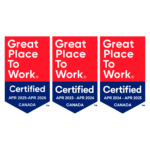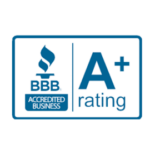Returning to Work After Covid-19
As the curve flattens and people return to their places of work following the COVID-19 lockdown, there may be some mixed feelings or reactions. Some workers may feel relief when returning to work as they were struggling for the past two years working from home due to distractions or social isolation. However, many people may be feeling stressed as they transition back into the office due to ‘return anxiety.’ Considering each individual may have a different response to returning to work after the pandemic, providing a safe and healthy workspace to come back to is vital for the well-being of all employees. If you think you or your workers may be experiencing some ‘return anxiety,’ this blog post can provide information on how to recognize and accommodate your worries.
What is ‘return anxiety’?
During the COVID-19 lockdown, many people in quarantine experienced significant levels of distress including anxiety, confusion, stress and anger. Over time, the media exposure and back-to-back lockdowns increased feelings of depression, loneliness, irritability, insomnia, ADHD and trauma. While returning to ‘normal’ may relieve these symptoms for some, for others it can increase feelings of distress.
Return anxiety can be a combination of fears and worries in the workplace. The main issue people may experience is the fear of being infected or infecting another person. These worries are justified as COVID-19 is still an active infectious disease that can be transmitted from one person to another. Another aspect of return anxiety is adjusting to new social norms in the workplace. Different workplaces may have different rules surrounding vaccines or working in close quarters which can impact some workers more than others. Return anxiety can also involve readjusting back to routines in the office. For example, over the past two years, you may have gotten used to communicating with your boss and coworkers over zoom meetings in the comfort of your own home. Now, you are expected to arrive at the office for in-person meetings and share a workspace with others which can raise feelings of social anxiety.
A person experiencing return anxiety may be reluctant to go back to work full time. This can have negative effects on individuals such as a loss of regular hours, discontent bosses, and possible job loss. Return anxiety can also negatively affect businesses as they may experience an increase in employee resignations as well as less productivity from their workers.
What are the Symptoms of Return Anxiety?
Return anxiety can spark several negative reactions from both individuals and workplaces if left untreated. Some additional symptoms include:
Individual
- Stress
- Anxiety
- Fatigue
- Burnout
- Absenteeism
- Withdrawal
- Anger
Workplace
- Increase in staff turnover
- Increase in complaints
- Lack of productivity
- Increase in absences
- Increase in unhealthy behaviours (gossiping, disputes)
Ways to Reduce ‘Return Anxiety’ and Make a Smooth Transitioning back to the Workplace
There are many steps employers and employees can take to reduce return anxiety so that the transition from work-from-home to the office goes smoother. By taking these steps, businesses can successfully reopen, and the well-being of employees will improve.
Employers
Employers can help their workers return to work safely by taking action to reduce workplace stressors. This includes addressing worker concerns regarding health and safety such as implementing more sanitation measures. They must also ensure that changes are communicated to employees before returning to the workplace, so they are well prepared. Employers and supervisors can also help reduce return anxiety by checking in on their workers and providing them with psychological support when needed. This is important because workers who are comfortable addressing their concerns and struggles to employers are more likely to remain at their workplace instead of resigning. Another step employers can take is slowly easing workers back into the workplace. This step is necessary as rushing back to your workplace 40 hours/week can be anxiety-provoking.
Employees
Individuals can also take steps to reduce their return anxiety by practicing mindfulness and acknowledging that their feelings of anxiety are normal following the lockdown. Workplaces may implement different expectations after returning such as encouraging large group meetings, or whether coming to work with a headache is acceptable. However, identifying and setting personal boundaries is important in avoiding return anxiety. Monitoring your health and wellbeing is vital to reducing return anxiety. To reduce symptoms, workers should also ensure that they are sleeping well, spending time with family, and staying active to maintain a healthy work-life balance.
Are You or Your Employees Struggling with Return Anxiety?
If all parties have taken all necessary measures to reduce return anxiety and you are still struggling, it may be time to seek help from a mental health professional. Many people believe that speaking to a therapist means that you have a mental health disorder; however, this is not always the case. All types of people can benefit from therapy for a variety of different reasons including, daily life stressors associated with COVID-19. If you are experiencing distress due to return anxiety, a therapist can help you overcome these feelings and improve your mental well-being. If some of your employees are experiencing return to work anxiety you may wish to put on a workshop to gain coping skills. A mental health therapist can help you transition back to the workplace smoothly and help you get back to a new ‘normal.’
When you are ready, get started today. Please contact us!
For corporate service inquiries, please call our Corporate Client Manager at 780-203-2273
For individual/family counselling and assessment inquiries, please call our intake team at 780-461-1717
References
Government of Canada, C. C. for O. H. and S. (2022, April 12). CCOHS: Coronavirus (COVID-19) – tips: Addressing return anxiety. Canadian Centre for Occupational Health and Safety. Retrieved July 6, 2022, from https://www.ccohs.ca/covid19/reducing-return-anxiety/
How to manage return anxiety as the lockdown lifts. Mental Health Commission of Canada. (2022, February 25). Retrieved July 6, 2022, from https://mentalhealthcommission.ca/resource/how-to-manage-return-anxiety-as-the-lockdown-lifts/
Salari, N., Hosseinian-Far, A., Jalali, R. et al. Prevalence of stress, anxiety, depression among the general population during the COVID-19 pandemic: a systematic review and meta-analysis. Global Health 16, 57 (2020). https://doi.org/10.1186/s12992-020-00589-w

















